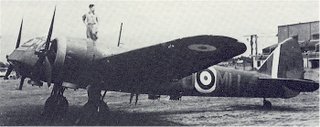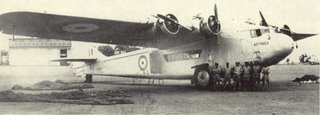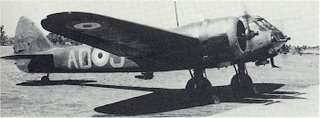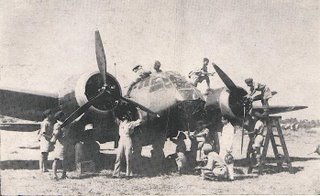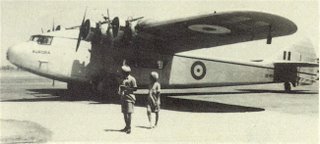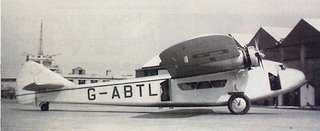History of Viluppuram DistrictViluppuram District was earlier a part of Cuddalore District. It was then bifurcated from Cuddalore and became a separate district on 30th September 1993. Because of this, the history of Viluppuram district closely resembles that of Cuddalore.
The Cholas were the early rulers. Among these rulers, Karikala Chola was the most famous and powerful.
For a short period, the Cholas were overthrown by Simha Vishnu Pallava and the Region came under the Pallava rule for sometime. Vijayalaya Chola again revived Chola rule. This was the beginning of great Chola Empire. The later Chola rulers were weak and the power passed on to the hands of Eastern Chalukyas.
Cholas regained their lost position but with the rise of Jatavarman Sundara Pandya-1 (1251 A.D), Chola supremacy came to an end. The sway of Pandyas lasted for over 50 years, followed by Muslim domination from 1334 to 1378 A.D. By 1378, the region came under the rule of Vijayanagar Kingdom and Nayaks were appointed as the rulers of the region.
In 1677 Shivaji took Ginjee area with the assistance of Golkonda forces. Then came the Mughals. During the Mughal regime, both the English and French acquired settlements in South Arcot. During the Anglo-French rivalry, the entire district was turned into a war land. After sometime, the entire area came under the control of East India Company. It remained under British authority till 1947 when India became independent.
Touristic Places
Viluppuram is the district headquarters of the Viluppuram District, which was bifuricated from the erstwhiele composite Sourt Arcot District from 30th September, 1993. It is the Second largest District in the State which lies in the middle of the Tiruchirapalli to Chennai National Highways No. 45. It is well connected by the rail road and it is major junction. From here one can go to any corner of the Tamil Nadu as well as to other part of India. This district is having variety of tourist spots which are more than 100 years old. The district has temples, masques and churches which are very old and famous. We are welcoming you to visit our district tourist places.
Nestled on three hills, and enclosed by a huge rampart 60 feet thick, stands the majestic GINGEE Fort, in the Villuppuram district, which is located on the Thindivanam to Thiruvannamalai road about 25 kms from Thindivanam and 130 kms from Chidambaram. The indomitable courage and valour of its erstwhile rulers, caused Father pimenta, a Jesuit priest to call the GINGEE Fort the Troy of the East Besieged by the Mughals and battered by the British, the fort still stands at 800ft. in height, guarded by a moat, eighty feet wide. Much of the early history of this 800Year old fort is shrouded in mystery,as the fort seems to have changed many hands times before it was annexed to the Vijayanagar empire.
Gingee is known as GINGEE in Tamil. The small town of GINGEE was once a capital city, With its province extending from Nellore in the north to the Coleroon (Kollidam) in the south. According to local legend, GINGEE Amman, was one of the seven virgins who were the guardian deities of the Village. Legend has it that at around 1200 A. D. , GINGEE was fortified by Ananda Kone, chief of the local shepherd community. In 1240 A. D. Krishna Kone . His successor is said to have fortified the northern hill which later came to be known as krishnagiri.The kone dynasty gave way to the kurumbars, who established their headquarters at Sendamangalam,which later came under the powerful Chola empire. Recorded history goes back to the 16th century, when Gingee (GINGEE) became the seat of the Nayaka rulers, who were under the lordship of the expanding Vijayanagar empire. Krishnadevaraya appointed Krishnappa Nayaka, and he was considered the founder of the Nayaka line of Gingee.
Most of the structures, fortification walls and temples were built during this period. The fortifications and defenses were further strengthened under chatrapati shivaji, the great Maratha ruler, was captured Gingee in 1677 A. D. Gingee came under the hegemony of the Moghul emperor Aurangazeb in 1691 A. D., and sarup singh was appointed as the chief of Gingee by the emperor, under the control of the Nawab of Arcot.
Sarup Singhs son. Raja De singh, revolted against the Nawab of Arcot, and was defeated and killed in the war that followed. Though Gingee became a part of the Nawabs territory in 1714 A. D . the young and courageous De Singh became a legend and his heroic deeds were sung in the form of popular balads. Thus Gingee too became quite well known. In 1750 A. D., Gingee came under the french rule and remained so till it was surrendered to the British in 1761
GINGEE today, with its ruined forts, temples and granaries, presents a different picture from the glorious splendor of its bygone days. But the remains of that valorous past, speak volumes about the numerous invasions, warfare and bravery that it witnessed. We invite you to this land of the brave and mighty, to witness a glorious past that still lives in the ruins of the GINGEE fort.
The forts are located on either side of the road to T. V. Malai . They are open from 8.00 HRS. to 17.00 HRS. Any assistance can be sought at the ASI office or the ticket counter.
Fortification Walls : The massive fortification walls of Gingee interconnect the three inaccessible hills-krishnaglri, chakkilidrug and Rajagiri. The three hills are disposted in the form of triangle, while the main wall connecting them is 20 meters thick. The tops of the three hills form impregnable citadels, while the inner fort contains many fortifications and gates. The Rajagiri citadel is the highest, about 800 ft. in height, and the most inaccessible. The 20 metres deep chasm is now connected by a bridge.
Kalyana Mahal: Built in the indo-Islamic style, the kalyana Mahal is one of the most attractive ruins in the fort. It consists of a square court, surrounded by rooms for the ladies of the Governors household. In the middle of this court, is a 27 meter high square tower, built of stone. The tower has a pyramidal roof. The rooms in this tower are very similar to other Vijayanagar Nayaka buildings elsewhere.
Venugopala swamy Temple : Located to the west of the inner gate of the lower citadel, the temple contains a remarkable sculpture depicting Lord krishna playing on the flute with is two consorts. Another interesting feature in this temple is a finely polished, broadsmooth slab found in front of the temple.
The Ponds: The way to the Hanuman Temple, outside the lower fort, abounds in temple ponds and many impressive structures. Chakkarakulam and chettikulam are the two famous ponds in this fort.Chettikulam was built by Raja shetty during the Maratha occupation of the place, towards the end of the 18th century. To the north of this pond is a platform believed to be Raja Desingh funeral pyre, where his young wife committed sati.
The famous Ranganatha temple. Built in typical Indo-Islamic style, the Audience hall is a damaged roof supported by a series of graceful little pointed arches. The Magazine building is also a noteworthy structure. Built in typical Vijayanagar style, is the famous Rangantha Temple. To the south of the watch-tower, is a big iron cannon, roughly 4 meters long, and 2 meters in circumference. In style and form, this cannon is very similar to the Malik-1-Maidan of Bijapur.
Sad – at – Ullah Khan Mosque : This mosque was erected by sad – at – Ullah khah to commemorate his victory over De singh and the capture of the fort in 1713 A. D . it is located at the entrance of the inner fort of Rajagiri. According to a Persian inscription found here, the mosque is said to have been constructed in 1717 –1718 A. D .
Kamalakkanni Amman Temple : This small shrine dedicated to Kamalakkani Amman (Goddess Durga), a local delty, is found on the way to the citadel on Rajagiri Hill. It contains a sacrificial altar and well-preserved mural paintings belonging to the Nayak period.
Thiruvaamathoor : An ancient chola temple. Dedicated to lord Sri Abiramaeshwarar is found here. 1500 years old temple . As the temple seems to have changed many hands Times between. Rajaraja Chola I (AD 985-1012) and seerangadeva Maharayar. (1584.AD) The amman Named Muththambigai.
Thumpoor : The Temple of lord Nagamman. This temple is 1450 years old
Esalam : Built by Rajendra cholan I (1012) lord sri Ramanatha Eswarar. The legend found in sanskrit language and in grantha character. Written on the periphery of the seal is as follows, Rajad-rajanya Makuta sreni-ratnesu sasanam Etad Rajendra cholasya parakesari varmanah. shrine dedicated to kamalakkani Amman (Goddess Durga), a local delty, is found on the way to the citadel on Rajagiri Hill. It contains a sacrificial altar and well – preserved murul paintings belonging to the Nayak period.
Ennairam : The chola temple of Narasimma swamy koil Built by Rajaraja chola 1 (985 –1014). 8,000 samanaras were lived in this village. Another temple Narchimma Perumal Koil found here.
Thalavanur : Shatru Malleswaralayam – Rock cut temple built by the pallava King Mahendra varman (B.C.580 to 630). Sculptures and Tamil and sanskrit inscriptions are found here.
Pachchaiamman Temple : T his was worshipped by special chittars. 7 Jadamuni shapes are very big pachaimalai is in the back side. Medicine plants are there. This medicine are can’t find Even in the kollimalai. Purathana temple is on the top, no statue on there. We can see the Thiruvannamalai tower standing in the half of the this mountain very clear.
24 Theerthangarargul : It is 2 kms north of Gingee town. The hillock on the western side of the road has two jaina caverns and a huge boulder containing sculptures of all the 24 Theerthankaras 9th Century style. It is only place where all the 24 Theerthankaras are shown in a single large composition. A open rock nearby was the place where monk Chandranandi obsered 57 days of fasting and died (5th- 6th century A.D) Another monk Ilayabhattara observed 30 days of fasting and died in the Century A.D. The pathway leading to the caves at the ground level has an image of Adinatha and at the top of a figure of Mahavira.
Venkataramana Temple : This sprawing temple, with its striking sculptures and carved pillars, narrates the aesthetic skills of the Nayaka dynasty. Built by MuthialuNayaka (1540-1550 A. D ) this is the largest temple to GINGEE. The later Vijayanagar period. The temple abounds in gopuras, mandapas and sculptured panels depicting gods and goddesses in scenes from the Hindu epics. Many Tamil inscriptions are also found in the walls of the Mandapas.The temple seems to have faced hard times during the French occupation (after 1761 A .D.) From this period the temple experienced forms of decay and old archaeological wealth was plundered by subsequent invaders.
Krishnagiri : This is a small hill made up of granite boulders, located to the north of Rajagiri on the main road from GINGEE to Tiruvannamalai. The citadel on this hill, can be reached by climbing a flight of steps over a steep slope. Within the citadel are two stone-built granaries, a pillared hall, two temples and an edifice built of brick and mortar known as the Audience Chamber.
Mandagapattu - A famous Archeological Temple site is 20 kms from Viluppuram and 17 kms from Gingee. It is a 100 ft hillock, where the Mahendraverma (I) of Pallava kind, (580-630 made a cave temple.
Mel Chittamur - Which is 20 kms of Thindivanam and 10 kms east of Gingee. Head quarters of Digambara sect in Tamilnadu with the JINAKANCHI MATHA presided over by the Pontiff. Two temples, one dedicated to Parsvanatha and other known as 'Mailanatha temple was originally a boulder containing roc-cut images of Bahubali, Parsvanatha, Adinatha, Mahavira and Ambika yakshi carved in the 9th century AD. Rebuilt in the 16th century and renovated in the present century.
Thirunarungondai - It is 16 kms northwest of Ulundurpet and 21 kms east of Thirukkoilur. Hillock at the village contains a Jaina cave and two temples dedicated to Parsvanatha and Chanraprabha. Cave served as the monastery of the monks of Virasangha in the 8th - 9th century A.D. Rich collection of bronze images found in the temple. Annual festival (Jan-Feb) celebrated on a grand scale and attended by Jains from all over Tamilnadu.
Auroville - A International Township - this town of tomorrow that's now in the making is just across the Pondicherry border in Tamil Nadu. Symbolishing an experiment in international living, it was launched in 1968 with the co-operation of many nations, at the behest of the Mother. 'The city of Dawn' is still in its initial stages of development. Matrimandir, the meditation hall is, only a few houses scattered over its vastness to accommodate the residents who, at present, number around 1,000. they live in 14 different communes and speak 55 different languages. But the goal is common-to evolve into a fuller human being by combining a life of strenuous physical activity with the discipline nurtured by the regular and spiritual exercise. Each inhabitant of Auroville contributes in his own way towards building auroville. We can know more about Auroville from the website
www.auroville.orgThirukkoilur - is situated on the Cuddalore - Chittoor trunk road and 37 kms from Viluppuram. the presiding deities of the Vishnu Temple are Ulagalanda Perumal (Thiruvikrama Swami) and Pushpavallithayar. Kabilar Kundru is also yet another picnic spot at Thirukkoilur which is situated in the middle of the river Pennayar. Kabilar was saint here and his last resting place, is maintained by the state Archeaological Department.
Kalrayan Hills- It is one part of the Eastern ghats, lies on the western side of the Kallakurichi Taluk. This area spread over an area of 600 sq. kms. approximately with the height ranging from 1000 ft to 3800 ft from the sea level. The History of Kalrayan hills with its Jagirdars run back to the time of Krishna Deverayar the Emperor of 'Vijaya Nagar Kingdom'. The emperor Krishna Deverayar given the rights to the tribes to enjoy this land but imposed many taxes on them. About the hill tribes it is said that warriors belonging to 'KARALAR' community had come from Kanchipuram and settled in kalrayan hills. after sometimes they over ride the tribal people called 'Vedar' (hunter) and married their wives. The communities of karalar and vedar who at present are called 'Malayali' and they call themselves as 'Goundars'. Kalrayan hills Possesses innumerable tourism Potentialities like water falls, jungle streams, rivers and rivulets and lovely jungle walks. The place is a veritable paradise for trekkers. It is also called as 'Poor man's hill station' of Tamil Nadu. Every year the District Administration is conducting the Summer Festival to create the awareness among the tribes.
Mayilam - Arulmigu Subramaniya Swami Temple located on small hillock at Mailam is a famous place for of pilgrimage. It is about 32 kms from Viluppuram on the Pondicherry - Thindivanam road. The Panguni Uthiram festival held in March - April fascinates a large crowd of devotes from all over Tamil Nadu.
Thiruvakkarai - A Geological park is about 40 kms from Viluppuram and 25 kms from Pondicherry. A national geological park with large number of petrified tree trunks known as fossil are found here. There is a temple for Lord Siva constructed by the famous Chola queen Sembiyan Madheviyar. Arulmigu Chandramoulisvarar and Tenambikai are the presiding deities here. Arulmigu Vakkaralingam and Arulmigu Vakkrakali for whom every full moon day and night of the year special prayers are conducted and thronged by pious devotees throughout the night. The Temple was sung by the Thirugnana Sambandar. Excellent sculptures and car/chariot like Mandapam is also existing here with huge nandhi and Ganesha. It was connected by Thindivanam and Pondicherry by regular buses.
Thiruvennainallur - It is 20 kms from Viluppuram on the Thirukkoilur road which is the birth place of Sadayappar, the patron of Kambar (The greatest Tamil poet and author of the Tamil Epic Kambaramayanam) There is also an ancient temple dedicated to Lord Siva.Marakanam Beach - It is 22 kms from Pondicherry across East Coast Road in Vanur Taluk. The salt field is very famous in this beach.

